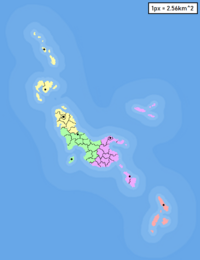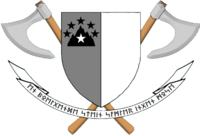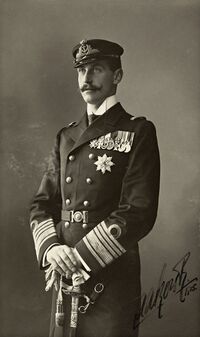Flatstone
De Republikken Flatstein The Republic of Flatstone | |
|---|---|
Motto: "En bølgende stein samler ingen mose." | |
Anthem: insert anthem name here | |
 Map of Flatstones Provinces | |
| Capital and largest city | Shale |
| Official languages | Norwegian English |
| Ethnic groups | 98% Støenish 2.3% Other |
| Demonym(s) | Støenish Steinmann (Norwegian) |
| Government | Right-wing Dictatorship |
• Chancellor | Dag Von Stone |
| Legislature | The Congress of Flatstone |
| United | |
• ??? | September 21st 1791 |
| Area | |
• Total | 46,208 km2 (17,841 sq mi) |
| Population | |
• 2019 estimate | 8,400,000 |
• 2010 census | 8,553,412.4 |
• Density | 181.786703601/km2 (470.8/sq mi) |
| GDP (PPP) | 2018 estimate |
• Total | $372,220,000,000 |
• Per capita | $44,311 |
| GDP (nominal) | 2018 estimate |
• Total | 396,732,000,000 |
• Per capita | $47,230 |
| Gini (2018) | 24.9 low |
| HDI (2018) | very high |
| Currency | Silver Stone (SVST) |
| Time zone | UTC+3 (UCT) |
• Summer (DST) | UTC+3 (not observed) |
| Driving side | left |
| Calling code | +224 |
| Internet TLD | .rock |
Flatstone is an island nation located in the ? sea, in Anteria. The country is made up of twenty three different islands, divided into f different provinces. Flatstone shares no borders and considers itself isolated and self-sustained as of 2020, not having to rely on foreign imports to maintain a healthy population as well as a stable economy. Flatstone holds a small population of 8,553,412.
Antiquity
The first native settlement in Flatstone was established on September 21st of 1791, when a group of settlers, comprised of eighty-two, arrived on the northern tip of Steinøy (Stone Island). The population began to gron quickly, and by 1796 around three other settlements consisting of offspring originating from the original 82, had migrated throughout the island. These settlements would come to be known as the four tribes of the archipelago, and it wouldn't take long for disputes over land rights to break out between the four, resulting in political instability for the next few decades.
Within the five years between 1791 and 1796, multiple more settlements had been established in the four tribal regions of Steinøy, with the Northern Tribe being the most economically capable at the time. These settlers would go on to unite the island during a civil war caused by the peoples want for unification, and the greed of local leaders for land. By establishing a Monarchy and electing Bjarne Von Stone to rule over the land, the divided island could finally be united under one flag as the various populations had long wanted the unification of the island, and an end to both political and religious division.
Unification
The conflict between the four tribes would begin on August 20th of 1796 when the Southern Tribe made multiple attacks on smaller settlements owned by the Eastern and Western tribes. These raids would mark the beginning of a fourteen year long civil war that would throw the island into turmoil for decades to come. Weapons utilizing gunpowder had not yet become popular amongst the settlers of the island at the start of the war, meaning that bladed weapons as well as calvalry were still popular at the time, however calvalry remained a symbol of nobility and members of calvalry regiments rarely saw action, as they were deemed to valuable to be lost in battle. Although not all of the settlements had access to forgeries capable of producing bladed weapons, and often relied on wooden or stone clubs, or simply whatever locals could get their hands on and use as a weapon. The southern settlement had shattered enemy supply lines and disorganized the majority of the enemies forces, managing to bring the fight to the capital of the western settlement by 1798, but had sustained serious casualties while fighting the westerners and were pushed back two kilometers into their own territory. That is until the Northern Tribe saw their chance to strike and advanced a large portion of it's army into the Western Tribe, giving them almost no time to react.
By this point in time three of the four tribes had experienced land loss to some extent, and the Northern Tribe had used it's superior resources and size to it's advantage. Because of the Northern advance into the West, the South could make another attempt at pushing the West back to their capital. A third of the Southern army had managed to push the Western army all the way back to the capital by 1799, completely obliterating multiple of their militia groups and taking 200 prisoners captive. Even with the Souths desperate efforts for victory, the North had managed to reach the capital of the West by late 1799, taking 400 prisoners, or essentially the remainder of the Western Army.
With the fall of the east occuring sooner then expected, the north and south had incorperated the prisoners into their own army. This gave them both a significant advantage over the remaining eastern troops, who had already been pushed back to their capital by the South. The majority of the northern army would begin to engage into conflicts with the south, while the rest would advance into the east. This would be a crippling blow to the remainder of the eastern army, who had already lost much of their morale because of the brutal tactics that the large southern army had used. However, the South could no longer advance into Eastern territory because of the need for their army on the Northern Border. The north had quickly pushed the South out of the former Eastern territories back to their original borders by early 1801, inflicting extreme casualties to their army along the way. The east would capitulate to the North by 1802, giving the north even more border along the South and even more troops to use against them. By this time the northern army had already been organized into a full militia force standing 3,200 strong. This would come to be known as the Steinhær in 1810. Years of resistance would be put up in the South, and after seven years of continous fighting and stalemates, the South would finally surrender their territory to the North in 1810. The Island had finally been unified by the Northern Tribe, and a small army had been established.
Steinpansel[1]
SJF[2]
Veien[3]


